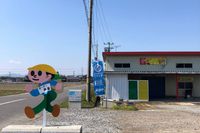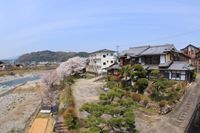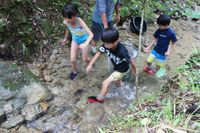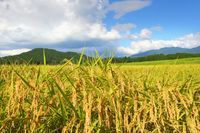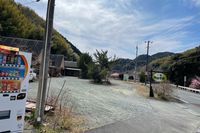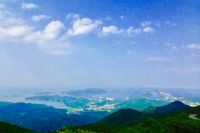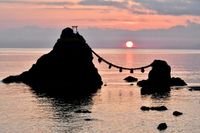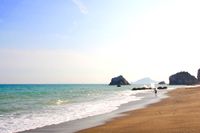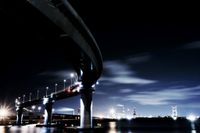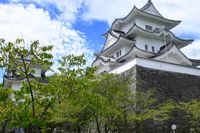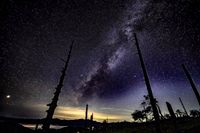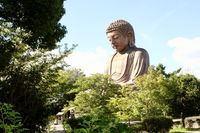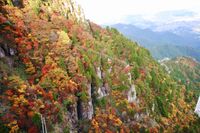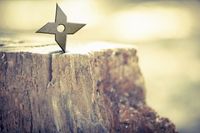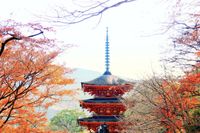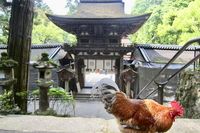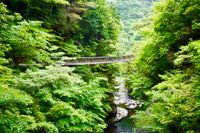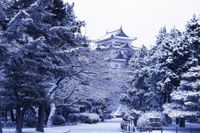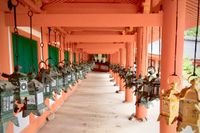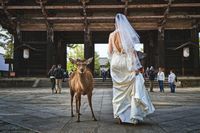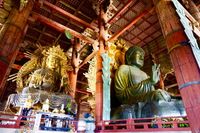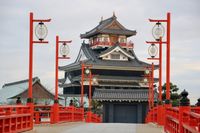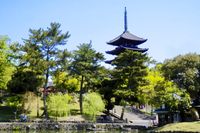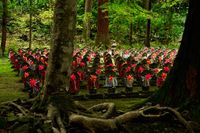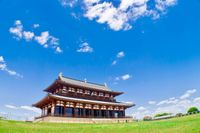Ise Jingu Shrine
三重県/伊勢市

Description
Built in 5 BC, this is the shrine that stands above all 10,000 other shrines in Japan. It is made up of the imperial palace with the the God of the imperial family, the God of the Japanese people "Amaterasu", with an outer hall which houses the God known as Toyouke no Okami. As the home of the imperial family, it is visited and revered by Samurai and regular people alike, with many people from all over the country coming to visit Ise Jingu Shrine. The prime minister and minister of agriculture also come to visit here every year.
Homepage
Address
Nearby Car Night Spots
(Bonfire BBQ) Chita Mihama Noma Beach Station
¥3,500〜
/ per nightAichi Noma, Mihamacho, Chita County
4.7
(42)Shin Meishin Suzuka PA (inbound) RV Station Suzuka * With Power!
¥2,200〜
/ per nightMie Yamamotocho, Suzuka-shi
4.3
(157)Nearby Activities
Catch and eat char in a beautiful valley in the mountains
¥2,000〜
/ per personShiga Fujise, Taga-cho Inukami-gun
3.0
(0)All you can eat rice balls and rice reaping in the rice field in the mountains
¥2,000〜
/ per personShiga Fujise, Taga-cho Inukami-gun
3.0
(0)Ranking Stations
Vanlife BASE | 45 min. from Narita Airport / Perfect for campervan travel/A seaside town rich in nature/Japanese countryside town/welcome traveler
¥7,000〜
/ per nightChiba Koseki, Kujukuri-machi, Sambu-gun
5.0
(62)Shin Meishin Suzuka PA (inbound) RV Station Suzuka * With Power!
¥2,200〜
/ per nightMie Yamamotocho, Suzuka-shi
4.3
(157)(Bonfire BBQ) Chita Mihama Noma Beach Station
¥3,500〜
/ per nightAichi Noma, Mihamacho, Chita County
4.7
(42)Nearby Drive Spots
Ise-Shima Skyline
This is a mountain road linking Ise Jingu and Toba City. The road was purpose built as a driving destination for visitors to see the Toba bay. The road opens from 7am to 7pm.
Couple Rock(Ise)
This is a large rock in Futami Okitama Shrine in Ise city, Mie prefecture. It was believed that rocks and mountains housed gods and became objects of worship, with Torii gates built as a path for the gods to walk along. Nowadays, the rock is seen as a symbol to bring harmony to married couples, safety at sea, or bountifulness.
Koijigahama Beach
This is a sandy beach of about 1 km, at the tip of the Atsumi peninsula. The area is so called, due to a legend that a couple of noble status were engaged in an illicit love affair and banished from their home, and lived in this area. There is a lighthouse on the cape, and is a popular dating spot with its beautiful sunset views.
Yokkaichi Inaba Port Line
This is a new road that was opened on 1 April 2018 in Yokkaichi. There are various factories and oil plants along the road, creating a dramatic view. The night view has given it the name "Dragon road" and is quickly becoming popular among photographers. ※ドラゴンロード © Kenichi_Inagaki クリエイティブコモンズライセンス(表示4.0 国際)https://creativecommons.org/licenses/by/4.0/
Iga Ueno Castle
This is a castle that was built in 1585 under the order of Tsutsui Sadatsugu. During the Sengoku era(1467-1600), it was the main base for the Iga Ninjas, and is also known as "Hakuho castle" due to its white and elegant appearance. Underground there is an Iga Ninja museum where visitors can experience the true world of Ninjas.
Odaigahara
This is a mountain plateau at an altitude of 1695 meters, on the border of Nara and Mie prefectures. It is a secluded area where you can see the spectacular views of the Milky Way, shining in a clear night sky. Stores, restaurants, accommodation facilities are also open close around the visitors' centre, and it is a popular place for astronomical observation.※Credit:Tsubasa Mizoguchihttp://bit.ly/2MI1vQs
Shurakuen Garden Buddha
This Buddha statue became witness to the marriage of the Emperor Showa in 1927 by Yamada Saikichi. It is a statue of one of the great Buddhas known as Amida Nyorai, with a height of 19 meters, larger than Buddha statues in places like Kamakura and Nara. Inside the park there is a camping area and public bathing facilities.
Mount Gozaisho
This is a mountain 1,212 meters in height, on the border between Mie and Shiga prefectures. In Spring there are the azalea and spring blossoms, summer brings the red dragonflies, autumn has its red, orange and yellow leaves, and winter brings frost covered trees. Tounaiheki is a famous rock climbing area in this mountain, and hiking can be enjoyed here during any of the four seasons. ※御在所岳 紅葉 © 菰野町 クリエイティブコモンズライセンス(表示4.0 国際)https://creativecommons.org/licenses/by/4.0/
Koga Ninja Village
This is a Koga Style Ninja Theme park that opened in 1983. Within the park, there is a Koga Ninja museum which houses the largest number of Ninja tools and exhibits in the world, as well as the original residence of the famous Ninja known as Fujibayashi Yasutake, which was deconstructed and rebuilt as a Ninja trick house. There are other sporting Ninja experiences available such as Shuriken sword fighting and "Mizugumo" - crossing rivers on small raft like objects.
Hasedera Temple
This is a temple built by Domyo in 727 AD, and is the branch temple of the Shingon Buzan sect main temple. The object of faith is known as Juichimen Kannnon(11-faced) and is the head temple of the Hasedeta temple group, of which there are around 240 in Japan. As one of Japan's most prominent Kannon sacred sites in Japan, it attracted the faith and reverence of many aristocrats and nobles. Situated in the middle of Mount Hatsuse, in April and March, around 7000 Moutan Peony flowers of 150 varieties bloom in the area, which had led the temple to be also known as the "Flower temple".長谷寺 © w_0705_ クリエイティブコモンズライセンス(表示4.0 国際)https://creativecommons.org/licenses/by/4.0/
Isonokami Jingu Shrine
This is a shrine that was built in 570 AD. It is one of Japan's oldest shrines, housing the great God Futsunomitama no Okami, and was the main temple of the ruler of military family, known as Mononobe clan. Even amongst old faiths, it was known as a particularly distinguished shrine. There are around 40 chickens in the area which are said to be underlings to the shrine gods. If you hear the chickens crying out, it is said to bring good fortune.
Mitarai Valley
A valley in Yoshino-gun, Nara prefecture. As the valley is quite deep there are various waterfalls, large and small, and visitors can see the brilliant green landscape that is largely untouched by humans. The greenery and autumn leaves are said to be the best in the Kinki region.
Nagoya Castle
This castle was built by Tokugawa Ieyasu in 1609, one of Japan's three great castles. It was used as a residence of 17th generation of the Tokugawa family until the Meiji era(1868-1912). The Golden Shachihoko (a Japanese sea creature with the head of a tiger and body of a carp) became the symbol of Nagoya. The castle is known both as Golden Shachihoko Castle and Golden Castle.
Kasuga Taisha Shrine
This is a shrine that was built in 768 AD to enshrine the Kasuga gods Nakatomi clan and Fujiwara clan. The Kasuga Gods are known as Takemi Kazuchi no Mikoto(Kashima Jingu Shrine), Futsunushi no Kami(Katori Jingu Shrine), Amenokoyane no Mikoto and Himegami(Hiraoka Shrine). It is the head temple of the Kasuga shrine group, of which there are around 1000 in Japan, and it is said that deer are the underlings to the shrine Gods, from the legend that Takemi Kazuchi no Mikoto rode here on a white deer. It is registered as a World Heritage Site.
Nara Park
Registered as a World Heritage Site, this is a famous deer park. Around 1,200 wild deer inhabit the area, and is popular for feeding the deer with "Deer senbei" (a type of savoury biscuit). The deer is said to be a god of Kasuga Taisha Shrine, which is in the local area, and Takemikazuchi is said to have come to the area from Kashima Jingu Shrine in Ibaraki riding on a deer when the shrine was built.
Todaiji Temple
This temple was built in 741 AD under the instruction of Emperor Shomu, and is a branch temple of the Kegon sect head temple. The temple's buddha statue known as the "Daibutsu of Nara" was built, and became a place of hope and support from Emperor Shomu, during famine, earthquakes and illness of the time. There are many items of cultural importance such as the largest wooden buddhist temple in the world, and is registered as a national heritage site.
Kiyosu Castle
This is a castle founded in 1405 by Shiba Yoshishige. It was widely known as the headquarters of Oda Nobunaga in 1555, and subsequently the Toyotomi and Tokugawa families became the castle owners, and it was used until 1613. The present castle tower reproduces the ornate Momoyama culture of the Azuchi-Momoyama period(1568-1600).
Kofukuji Temple
This is a temple built in 669 AD by Fujiwara Fuhito, amongst others, and is a branch temple of the Hoso sect main temple. The main object of worship is known as Shaka Nyorai, and is registered as a national treasure. It was considered as one of the four great temples during the Nara period(710-794) and one of the seven major temples during the Heian period(794-1185), and increased in prominence through sharing teachings with Kasuga Taisha Shrine. There are numerous cultural treasures such as the wooden deva king statue.
Kongorinji Temple
This is a Tendai sect temple built in 741 by Gyoki. The object of worship is Sho Kannon and after it became assigned as a holy place of Buddhist training by the Ennin Priest who practiced at Mount Hiei, it became the branch temple of Enryakuji Temple. It is famous for the countless Ksitigarbha (buddha that looks over children, travelers and the underworld) known as the "Thousand Jizou". As the main hall is separated from the main gate, it is thought that it escaped burning down from the attack of Oda Nobunaga.
Heijo Palace
A town built by Empress Genmei in 710 AD, it is a registered world heritage site. The town was created as a capital to practice the law of the land and was 2,500 hectares in size. The model of the city was based on China's city of Choan City. The Suzaku gate and imperial council hall have been restored, allowing visitors to feel the history of the original town.




